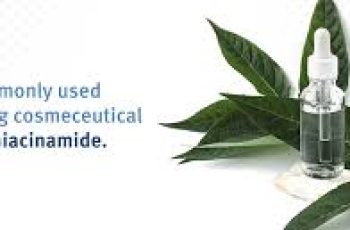
How to Prevent Adverse Reactions to Skincare Products: A Complete Guide
We’ve all experienced it—the thrill of trying out a brand-new skincare product, convinced it’s going to be a game-changer for our skin. You finally treat yourself after reading reviews, watching influencers rave, or trusting a recommendation from a friend. The packaging is beautiful, the scent is luxurious, and you feel like you’re doing something good for yourself. However, sometimes that excitement fades quickly, especially when the product causes your skin to react negatively.
Whether it happens immediately after application or develops over time, adverse skin reactions can be frustrating, uncomfortable, and even discouraging. It’s natural to wonder what went wrong. Was it something you did? Is your skin overly sensitive? Or was the product simply not suited for your specific needs?
The truth is, adverse skin reactions are more common than you might think, and they’re not necessarily your fault. Many factors contribute to how our skin responds to certain formulations, and learning to identify them can be the first step in preventing irritation, breakouts, or allergic responses in the future.
Let’s explore the most common reasons why skincare products cause adverse reactions—and more importantly, how to prevent them.
1. Using Products That Are Not Suited to Your Skin Type
One of the most common mistakes people make in their skincare routine is using products that don’t match their skin type. Your skin type—whether it’s oily, dry, combination, sensitive, or normal—plays a vital role in how products interact with your skin. Choosing a product that’s too drying, too rich, or not hydrating enough can disrupt your skin’s natural balance.
For instance, if you have dry or dehydrated skin and use products designed for oily skin—such as oil-free moisturizers or mattifying cleansers—you might find your skin becoming even more parched, tight, and possibly irritated. On the other hand, individuals with oily or acne-prone skin may experience breakouts or clogged pores when using heavy, oil-rich creams intended for dry skin types.
Tip: Always assess your skin type before purchasing new skincare products. Many online tools, quizzes, and dermatology consultations can help you determine whether your skin is oily, dry, sensitive, or a combination. Look for labels that indicate which skin type the product is intended for.
2. Allergies to Ingredients in the Product Formula
Another common cause of negative skin reactions is an allergic response to one or more ingredients in a skincare product. This can range from mild itching and redness to more serious symptoms like swelling or hives.
It’s essential to remember that an allergic reaction does not necessarily mean the product is “bad” or poorly made. Even high-end, dermatologist-recommended products can trigger allergies in people with sensitivities to specific ingredients.
Tip: If you experience an allergic reaction, try to pinpoint the ingredient that may have caused it. Compare the ingredient list to other products you use without issues. If you can identify a pattern, avoid products containing that ingredient in the future. Keeping a skincare journal where you note any reactions and ingredients involved can be extremely helpful.
When in doubt, consult with a dermatologist, especially if the reaction is severe or persistent.
3. Over-Exfoliating or Using Harsh Scrubs
Physical exfoliants—such as facial scrubs—are popular for removing dead skin cells and giving the skin a smoother appearance. However, some facial scrubs can be too abrasive, especially those containing crushed nutshells, fruit pits, or sharp particles. These ingredients can cause microtears in the skin, leading to redness, irritation, and even long-term damage.
Even if your skin initially feels smooth and clean, over-exfoliating or using harsh scrubs regularly can compromise your skin barrier and make it more susceptible to bacteria and environmental stressors.
Tip: If you enjoy using scrubs, opt for ones with gentle exfoliating particles like rice powder, jojoba beads, or white pumice. These tend to be less abrasive and more skin-friendly. Alternatively, consider using chemical exfoliants such as alpha hydroxy acids (AHAs) or beta hydroxy acids (BHAs), which can exfoliate more evenly and with less risk of physical irritation.
4. Introducing Potent Actives Too Quickly
Certain skincare ingredients are highly effective but can also be quite strong—especially when your skin isn’t used to them. Retinol, vitamin C, AHAs, BHAs, and salicylic acid are powerful actives that can improve skin texture, reduce acne, and even reverse signs of aging. However, they can also cause flaking, burning, or redness when introduced too quickly or in high concentrations.
Tip: When starting a new active ingredient, begin slowly. For example, with retinol, start by applying it once a week in the evening and gradually increase to two or three times per week over time. This allows your skin to build tolerance and adapt, minimizing the risk of irritation.
The same approach applies to vitamin C serums or exfoliating acids—start with a lower concentration and use them every other day or every few days, depending on your skin’s sensitivity.
5. Poor Formulation and Harsh Additives
Not all skincare products are created equally. A product can have good intentions—hydrating, anti-aging, soothing—but if the formulation is poor, the ingredients may not interact well with one another or with your skin.
Fragrance is a common culprit. While it may make a product smell pleasant, synthetic or strong natural fragrances can irritate sensitive skin, especially when used daily. Other problematic ingredients include alcohol (in high concentrations), certain preservatives, or essential oils that can sensitize the skin over time.
Tip: Try to choose fragrance-free or hypoallergenic products, especially if you have sensitive skin. Pay attention to how your skin feels not just immediately after using a product, but in the days and weeks following. Sometimes reactions develop slowly as sensitivity builds up.
6. Not Performing a Patch Test
One of the simplest and most effective ways to avoid an unwanted reaction is to perform a patch test before using a new product on your face.
A patch test involves applying a small amount of product to an inconspicuous area of skin (such as behind the ear or on the inside of your wrist) and observing it over 24-48 hours. If redness, bumps, or itching occur, it’s a sign your skin may not tolerate the product well.
Tip: Make patch testing a habit every time you try a new product, especially those with active ingredients or strong formulations. It’s a small step that can save you from discomfort and prevent serious reactions.
7. Overloading Your Routine with Too Many Products
Sometimes it’s not one product causing a problem—it’s the combination of several. Layering too many products, especially those with overlapping actives like acids and retinoids, can stress your skin and lead to adverse reactions.
Tip: Keep your skincare routine simple, especially when introducing new products. Use a cleanser, moisturizer, and sunscreen as a basic framework, and introduce serums or treatments one at a time to gauge how your skin reacts.
Do’s and Don’ts to Prevent Adverse Skin Reactions
Do:
Understand your skin type and buy products accordingly.
Keep a skincare diary to track ingredients and reactions.
Slowly introduce new ingredients, especially actives like retinol or acids.
Perform patch tests regularly before full-face application.
Research ingredients and formulations—less can be more.
Consult a dermatologist if reactions persist or worsen.
Don’t:
Assume that a more expensive product is always better.
Keep using a product that’s causing irritation just because it worked for someone else.
Ignore the role of SPF—some ingredients can make your skin more sun-sensitive.
Panic if your skin suddenly reacts to a familiar product—sometimes the skin’s needs change over time.
Layer too many new products at once—give your skin time to adjust.
Final Thoughts
Preventing adverse reactions to skincare products isn’t just about avoiding “bad” ingredients—it’s about understanding your own skin, making informed choices, and being patient. The journey to healthy, glowing skin involves trial and error, just like mastering a recipe. Some ingredients blend well together, while others need to be handled carefully.
With the right knowledge, attention, and care, you can create a skincare routine that’s safe, effective, and perfectly suited to your skin’s unique needs. So, take the time to listen to your skin—it often knows what it needs better than any label or trend can tell you.


